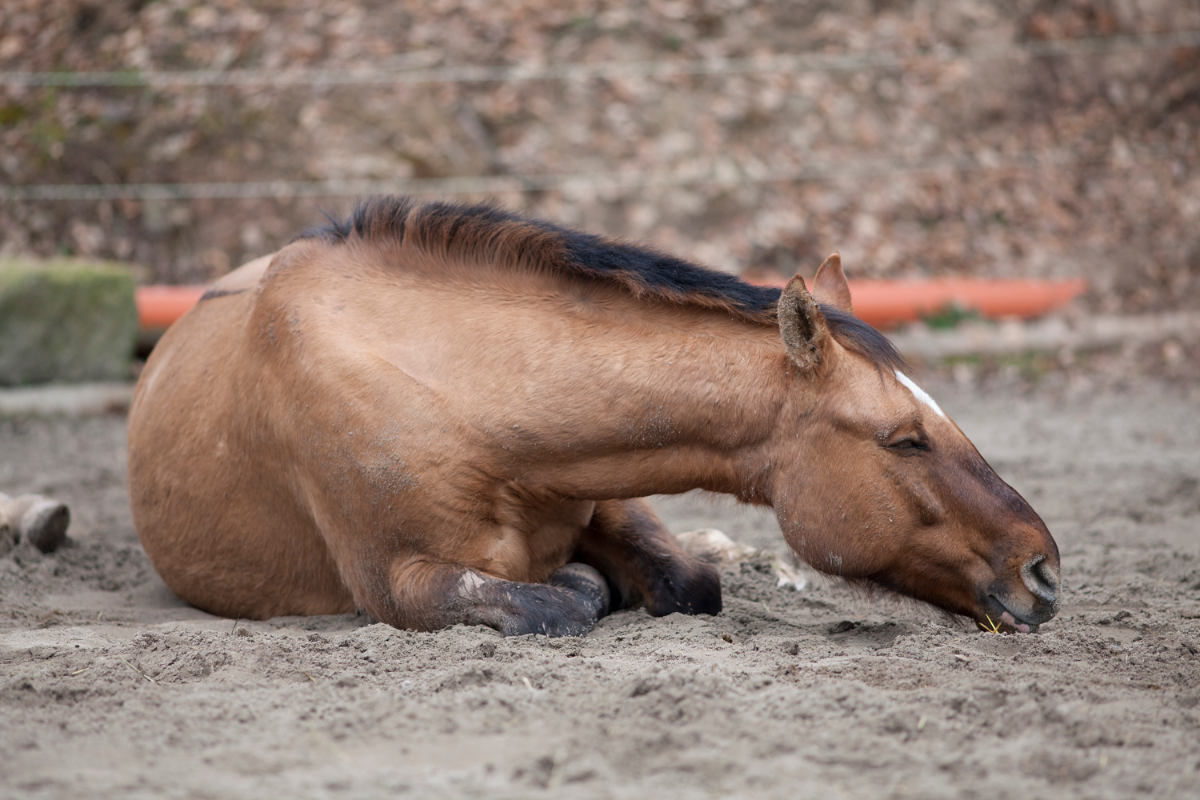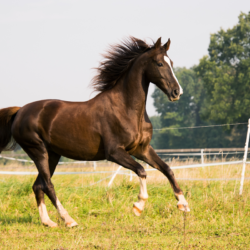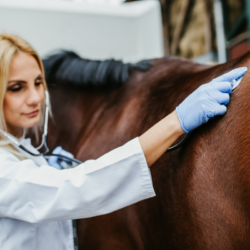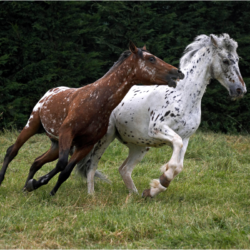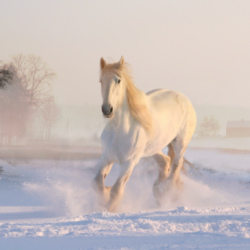Colic in horses is one of the health problems most feared by owners. As the leading cause of equine mortality, it requires special attention and in-depth knowledge. In this article, we will explore the infectious agents responsible, the symptoms, methods of diagnosis, available treatments and means of prevention to help you protect your horses from this painful condition.
What is colic?
Colic in horses is mainly the result of digestive dysfunction and is not caused by a specific infectious agent. The term refers to abdominal pain caused by various problems in the digestive tract. The anatomical features of the horse, such as its very long and mobile small intestine and its inability to vomit, make it particularly prone to colic. Causes include intestinal blockages, twisting and displacement.
Colic can be divided into several categories:
- spasmodic colic, caused by intense contractions of the intestinal walls ;
- occlusive colic, due to the accumulation of food forming a blockage;
- gaseous colic, resulting from excessive gas production ;
- and inflammatory colic, often caused by gastric ulcers.
Although there may be colic of non-digestive origin, such as uterine torsion or bladder stones, this is much less common. Colic is therefore a complex syndrome with a variety of symptoms. They require constant vigilance on the part of owners and vets.
What are the symptoms of colic?
The symptoms of colic in horses vary according to pain tolerance and the seriousness of the situation. They are classified into stages, enabling the urgency to be rapidly assessed.
- Stage 1: No pain. At this stage, the horse may show no apparent signs of pain, but monitoring is essential.
- Stage 2: Mild pain. Symptoms include reduced appetite, scratching at the ground, frequent lying down and looking at the flanks.
- Stage 3: Moderate pain. The horse becomes agitated, slaps its belly with its hind legs, lies down and rolls frequently.
- Stage 4: Severe pain. The horse sweats profusely, breathes heavily and rapidly, and throws itself on the ground to roll.
- Stage 5: Severe depression. At this stage, the horse stops moving because of the intensity of the pain.
Each horse may express pain differently. Some may show only a slight drop in appetite or subtle signs. Others may show severe symptoms such as profuse sweating and purplish-coloured mucous membranes, a sign of extreme severity. Extra vigilance is needed to detect these signs and intervene quickly.
How is the disease diagnosed?
Diagnosing colic in horses is crucial to rapid and effective intervention. The veterinarian plays a central role in this process.
At the first signs of colic, it is advisable to contact a vet. While waiting for the vet to arrive, it is a good idea to gently walk the horse to stimulate transit and prevent it from lying down, which could make the situation worse.
The vet will start by gathering detailed information: onset and form of symptoms, recent changes in diet or environment, medical history and recent treatments.
The clinical examination includes an assessment of body temperature, the state of dehydration, colouration of mucous membranes, heart and respiratory rates, and digestive sounds.
Specific examinations may include transrectal palpation to detect abnormalities in organ size, position and mobility, and nasogastric probing to assess stomach contents and administer treatment if necessary. Ultrasound can complement transrectal palpation to confirm colonic displacement or detect the presence of abdominal fluid. A nasogastric tube can be used to assess the stomach contents and check for reflux.
These diagnoses help to assess the severity of colic and guide the most appropriate treatment.
What treatments are available?
In the event of digestive colic, access to food should be immediately withdrawn to prevent the accumulation of feed. Walking the horse stimulates intestinal transit and prevents it from rolling over, which could aggravate the situation.
To relieve pain, the vet administers anti-inflammatories. In the event of dehydration, the horse is given a drip to rehydrate the digestive tract. If necessary, blood tests are carried out to determine the urgency and need for surgery.
In the event of torsion, intestinal invagination or hernia, emergency surgery may be necessary. These operations are delicate and costly, and require a precise assessment of the chances of success and the costs involved before deciding to carry them out.
The treatment of colic is based on rapid and appropriate intervention, ensuring the best prognosis for the horse.
What can be done to prevent colic?
The prevention of colic in horses is based on sound management of the farm and appropriate care.
The diet should be divided into several meals to respect the horse’s digestive physiology. The transition from one diet to another should be gradual. Grazing must also be properly managed to limit the intake of earth or sand.
The location and lifestyle must include daily outings for stalled horses and appropriate management of stall-to-grazing transitions in relation to feed.
The level of activity should be adapted according to activity levels to avoid imbalances. Limiting stress and boredom by distributing hay or forage to keep the horse occupied is also crucial.
Annual care includes a regular worming programme and appropriate dental care. Constant access to fresh, clean water is essential, especially during changes in temperature.
These good practices, combined with extra vigilance, can significantly reduce the risk of colic and ensure better digestive health for your horse.
Relieving your horse with phytotherapy
Digestive colic in horses is an emergency situation requiring immediate veterinary consultation and sometimes surgery, as in the case of intestinal obstruction caused by a pedunculated lipoma in older horses. However, for less severe impactions, phytotherapy can be an interesting solution. The aims of the treatment are to restore transit and relieve abdominal pain. Medicinal plants with antispasmodic, anti-inflammatory and laxative properties are commonly used to treat and prevent impactions. It is also essential to supplement the treatment with prebiotics and probiotics to restore and stabilise the intestinal flora.
Wild chamomile (Matricaria recutita) is a herbaceous plant with antispasmodic and anti-inflammatory properties. Its main constituents, sesquiterpene lactones and flavonoids, help to treat gastrointestinal conditions such as spasms and inflammatory diseases.
Ginger (Zingiber officinale) is a plant used for its carminative, anti-inflammatory and antispasmodic properties. The gingerols it contains inhibit pro-inflammatory mediators, making it an excellent remedy for nausea and gastrointestinal spasms.

